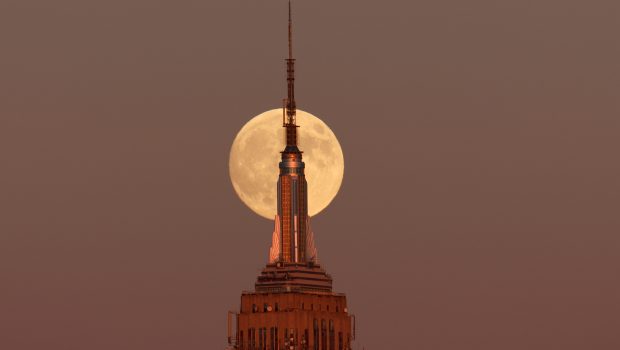Hunter’s Moon: Everything You Need to Know About Tonight’s Supermoon

The Hunter’s Moon is the third of four consecutive supermoons in 2024.
Stargazers are in for a treat as the year’s largest supermoon, known as the Hunter’s Moon, graces the sky.
This is the third of four supermoons this year, appearing even bigger and brighter than in August and September. It reached its full lunar phase on Thursday, Oct. 17, with peak illumination in the United States at 7:26 AM ET, according to NASA.
Additionally, it coincides with Comet Tsuchinshan-ATLAS, also known as C/2023 A3, which is currently shining brightly and is visible to the naked eye at a magnitude of +0.5.
Why Is the Supermoon Called Hunter’s Moon?
The Old Farmer’s Almanac, which first began publishing the names of the full moons in the 1930s, states that the full moon was named the “Hunter’s Moon” because it marked the beginning of hunting season, signaling hunters to prepare for the approaching cold.
According to the publication, after the fields were harvested during the Harvest Moon—the full moon that appears prior to the Hunter’s Moon—hunters could easily spot animals coming to scavenge, as well as foxes waiting to pounce. Other sources also refer to this full moon as the Sanguine or Blood Moon, connecting it to the blood from hunting or the color of the changing autumn leaves.
“The Next Full Moon is a Supermoon; the Hunter’s Moon; the Travel Moon, the Dying Grass Moon, or the Sanguine or Blood Moon; the start of Sukkoth; Sharad Purnima, Kumara Purnima, Kojagari Purnima, Navanna Purnima Kojagrat Purnima, or Kaumudi Purnima; the end of Vassa and Pavarana; the Thadingyut Festival Moon; the end of the Phaung Daw U Pagoda Festival; and Vap Poya,” NASA skywatcher Gordon Johnston wrote.
When Is the Next Supermoon?
If you missed tonight’s spectacle, the next supermoon can be spotted on Nov. 15, 2024. It marks the final supermoon of this year’s series.
What Is the Best Way to See a Supermoon?
- Timing is key: The supermoon appears most impressive during moonrise or moonset when it’s near the horizon.
- Escape light pollution: For an enhanced view, consider venturing outside city limits to avoid interference from artificial lighting.
- No special equipment needed: The supermoon is visible to the naked eye, though binoculars or a telescope can offer a more detailed look.
- Frame the view: When the moon is low on the horizon and framed by landmarks, an optical illusion makes it appear even larger.